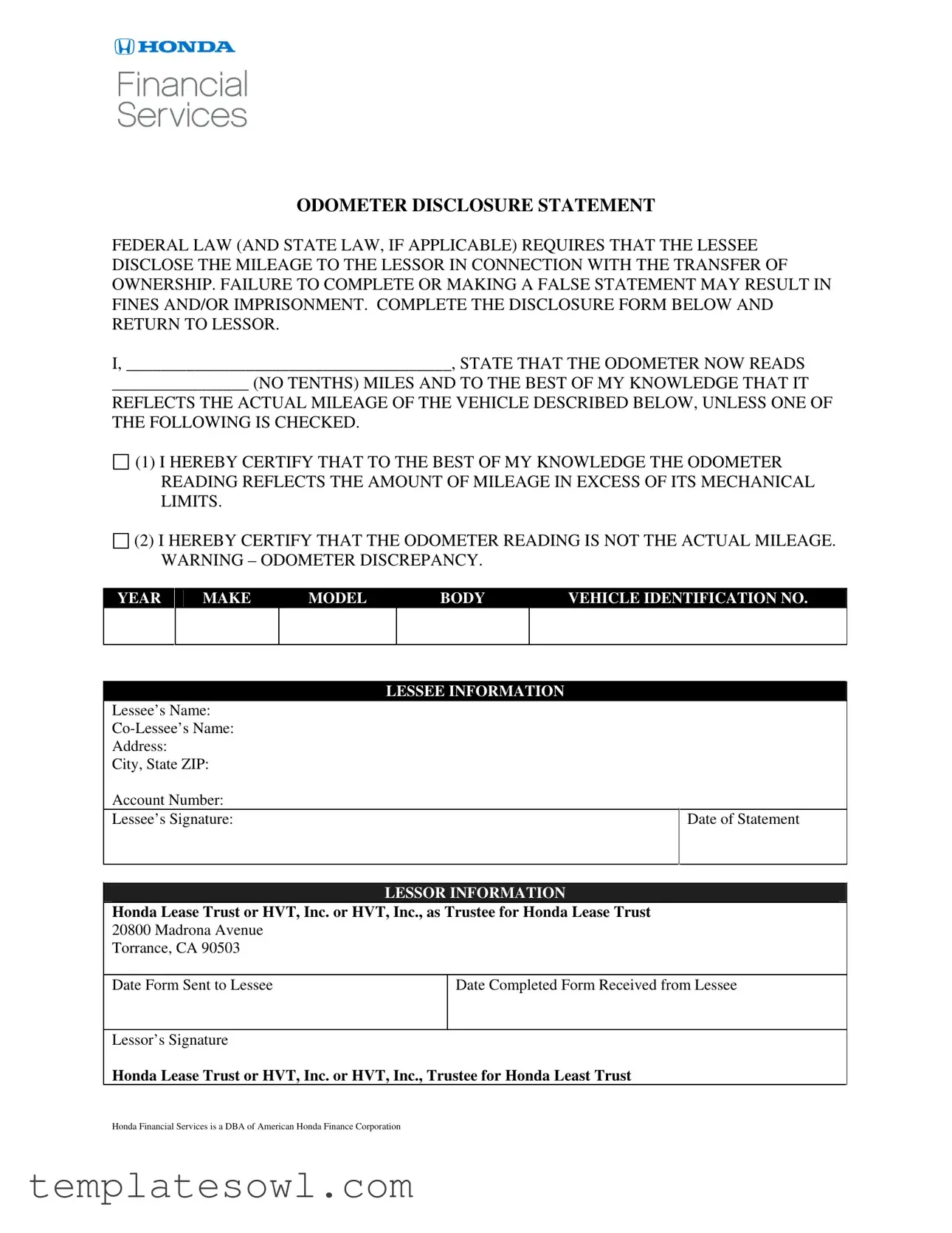What is the Honda Odometer Statement form?
The Honda Odometer Statement form is a legal document required during the transfer of vehicle ownership. It discloses the current mileage of the vehicle and affirms whether this reading reflects the actual mileage or if there are discrepancies.
Who needs to complete the form?
The form must be completed by the lessee (the person leasing the vehicle) before transferring ownership to the lessor or a third party. Accurate completion ensures compliance with federal and state laws regarding odometer disclosures.
What information do I need to provide on the form?
You will need to provide your name, the vehicle's current odometer reading (without tenths), the vehicle’s description including year, make, model, and VIN (Vehicle Identification Number). Additionally, you'll confirm if the reading reflects actual mileage or if it has gone beyond its mechanical limits.
What are the legal implications of not completing the form?
Failure to complete the Honda Odometer Statement form or providing false information may lead to serious legal consequences. Penalties can include fines or even imprisonment, as both federal and state laws mandate this disclosure during ownership transfer.
How do I know if the odometer reading is accurate?
To ensure the odometer reading is accurate, review the vehicle’s maintenance records, previous sale documents, and any other related paperwork. A professional inspection can also provide clarity about the vehicle's mileage.
What should I do if the odometer reading does not match what I believe to be accurate?
If you suspect a discrepancy, you should check all available documentation regarding the vehicle. If you confirm that the perceived mileage differs from the odometer reading, document these findings and sign the form accordingly, indicating the discrepancy.
When should I return the completed form?
The completed Honda Odometer Statement form should be returned to the lessor as soon as possible after completion, ideally during the transfer process. This ensures that all parties involved have the necessary documentation for legal compliance.
Can I complete the form electronically?
Many lenders and leasing companies, including Honda Financial Services, now allow for electronic submission of documents. However, it is essential to confirm with your lessor whether they accept electronic forms and to ensure that all required signatures are appropriately captured.
Where can I obtain more information about this form?
For more information, you should contact your lessor, in this case, Honda Lease Trust or the relevant representatives. Additionally, you can check Honda Financial Services’ official website or reach out to customer service for any detailed queries regarding the odometer statement process.

